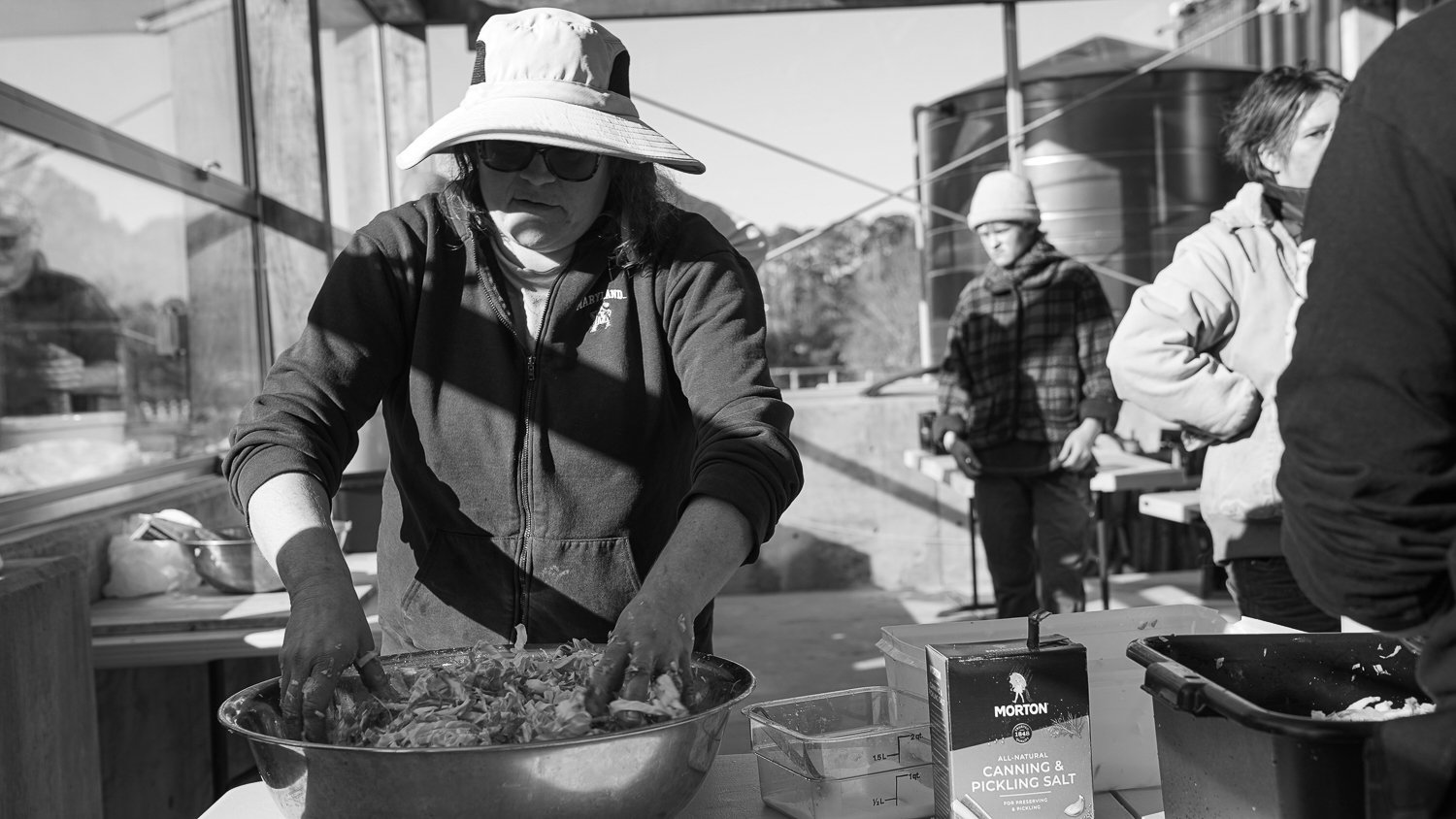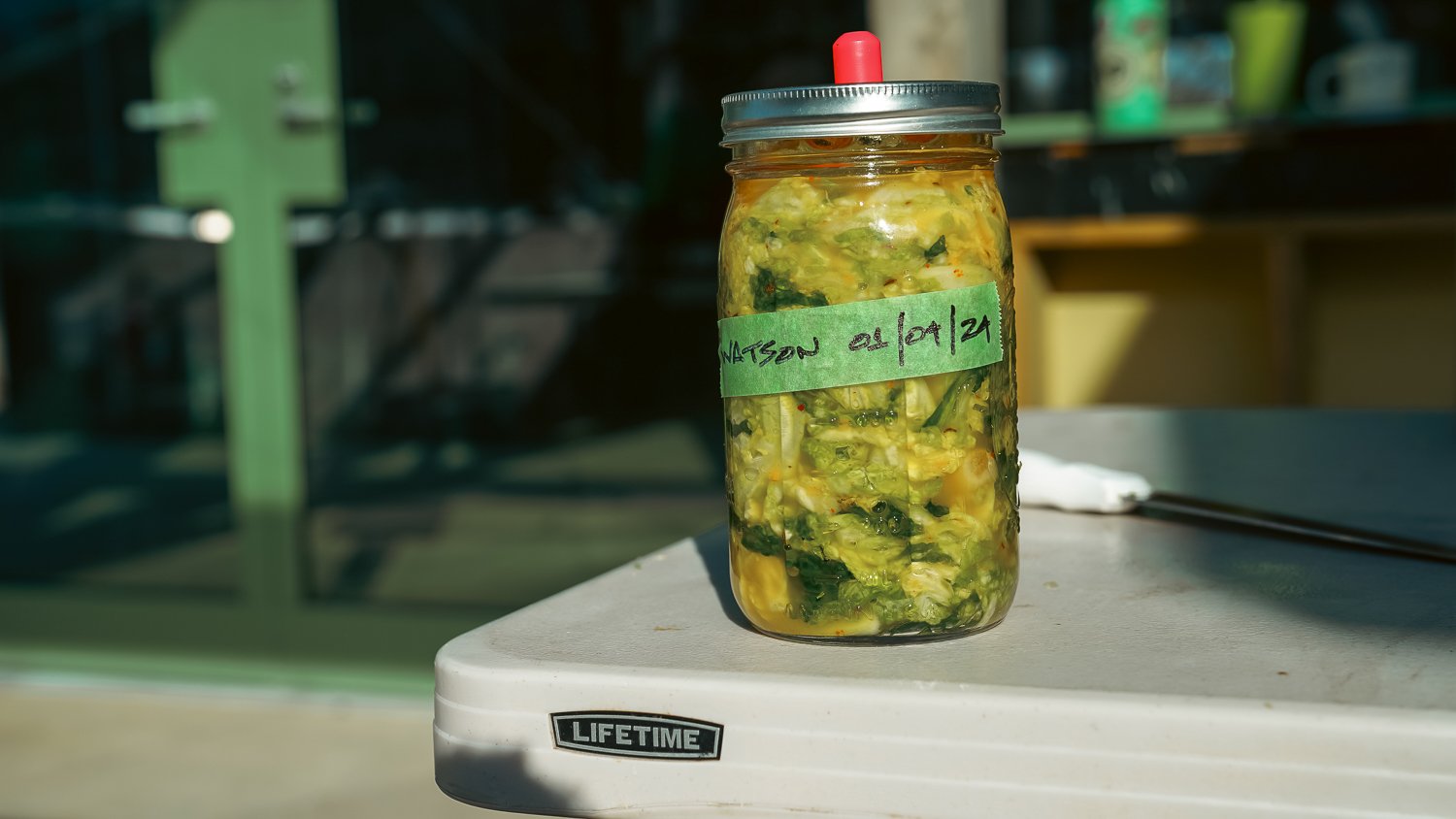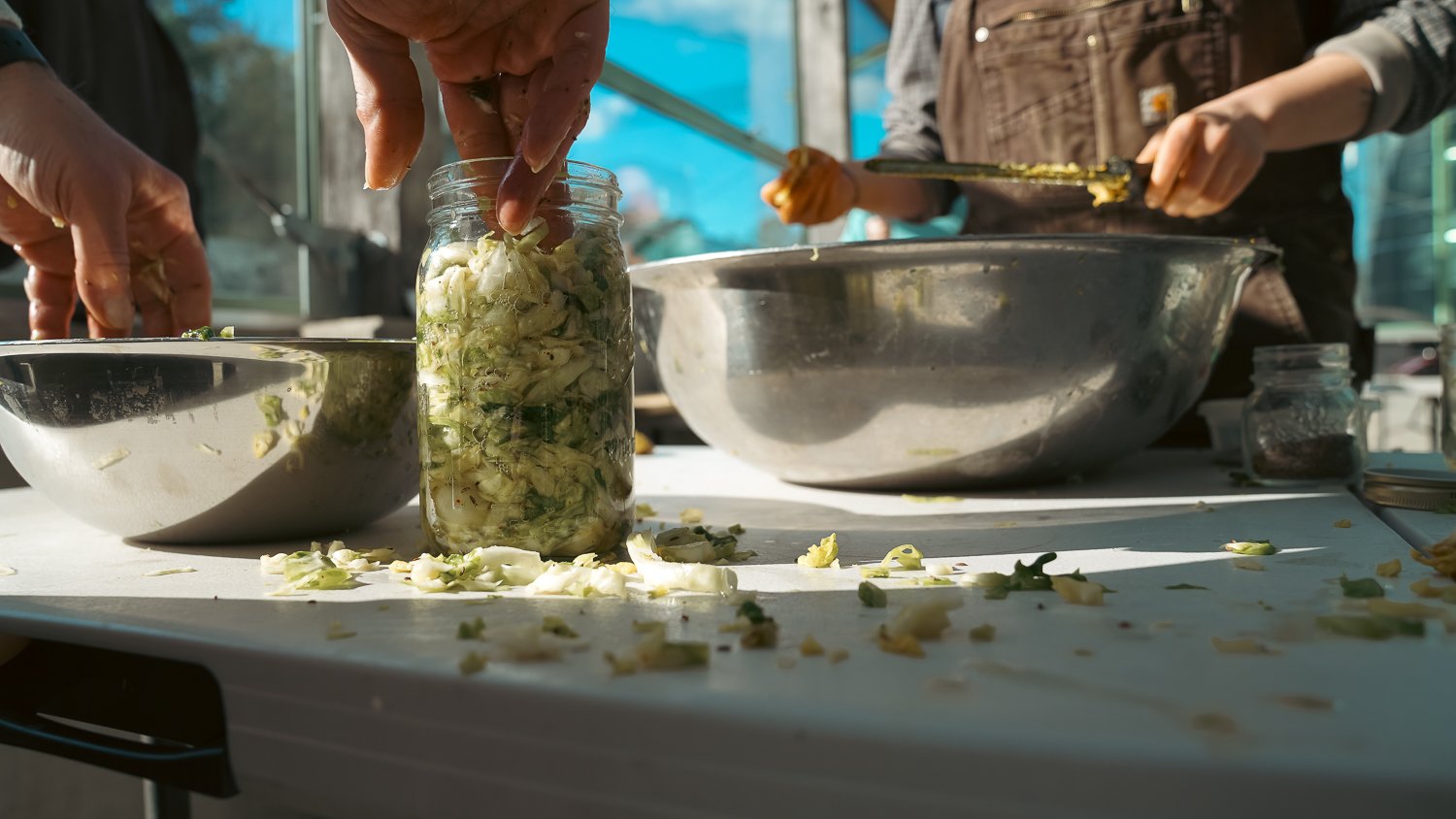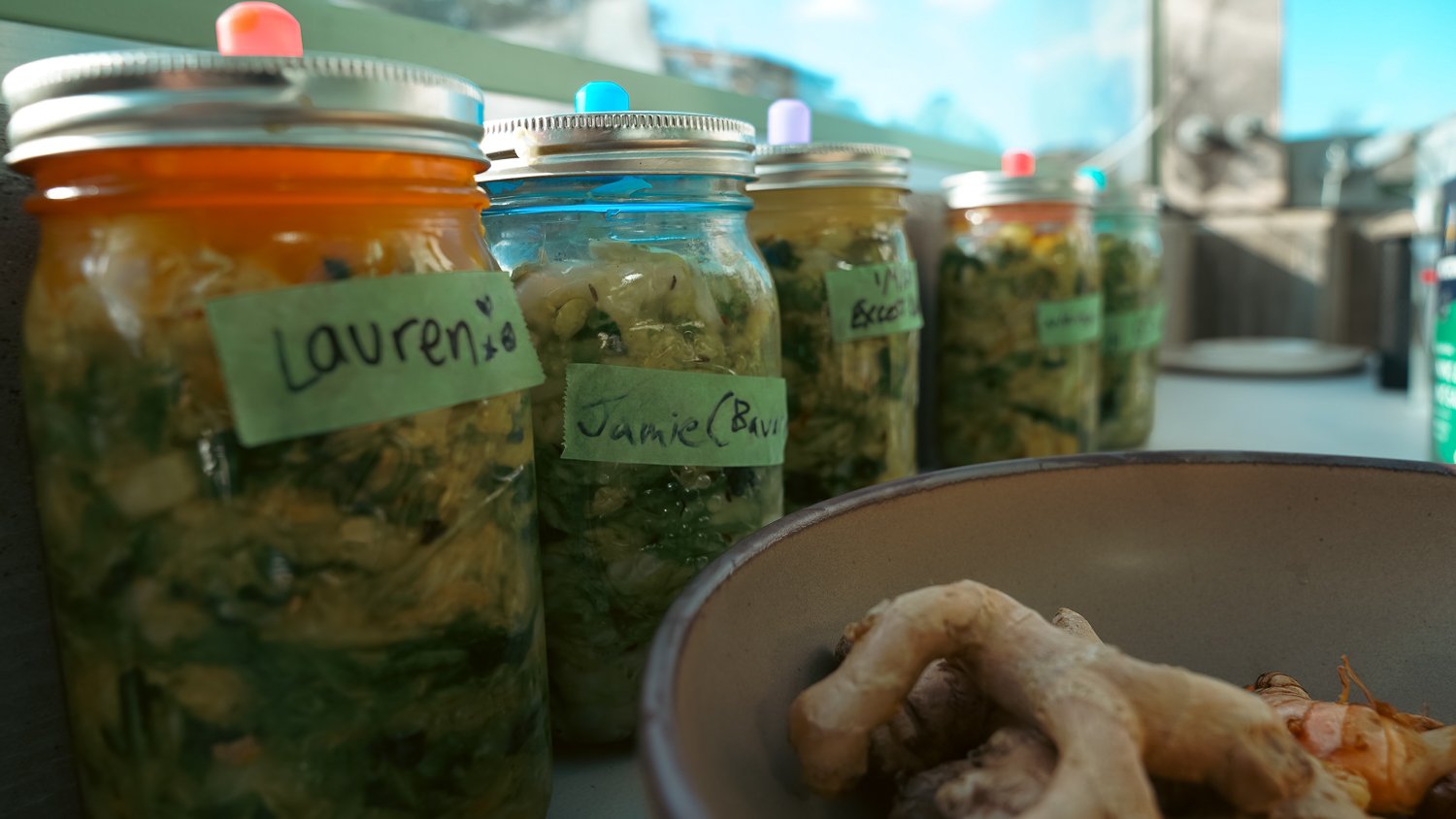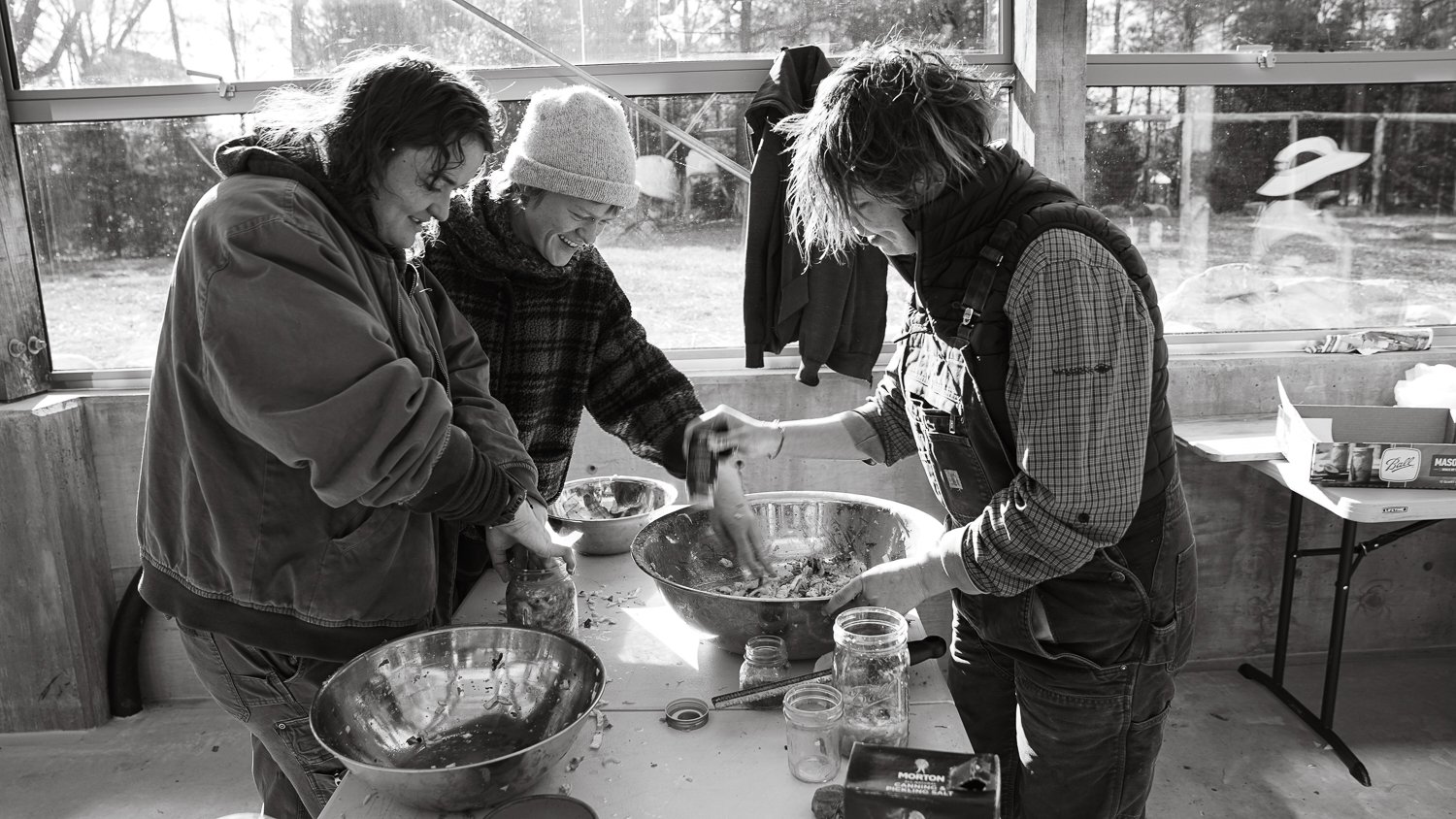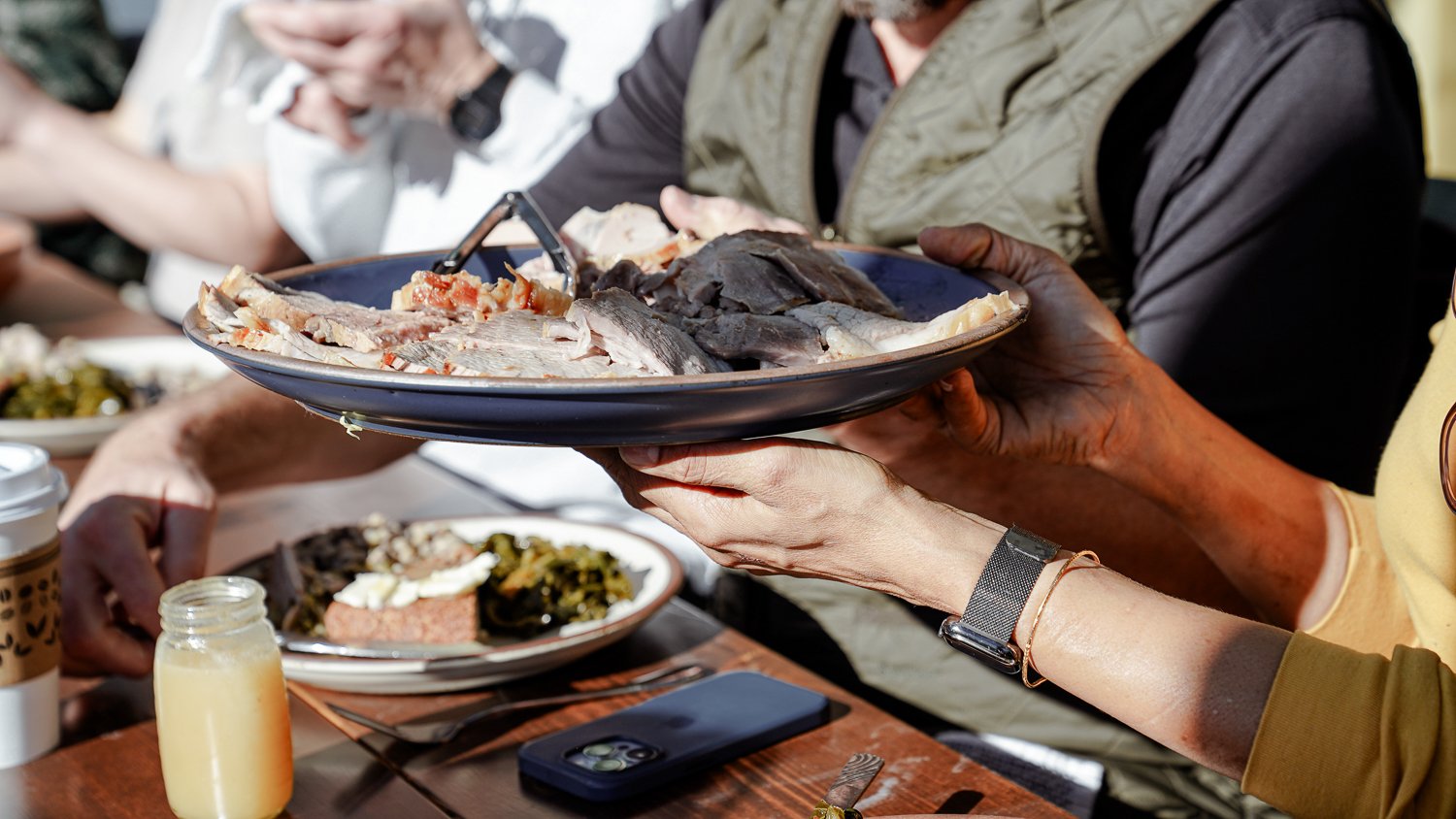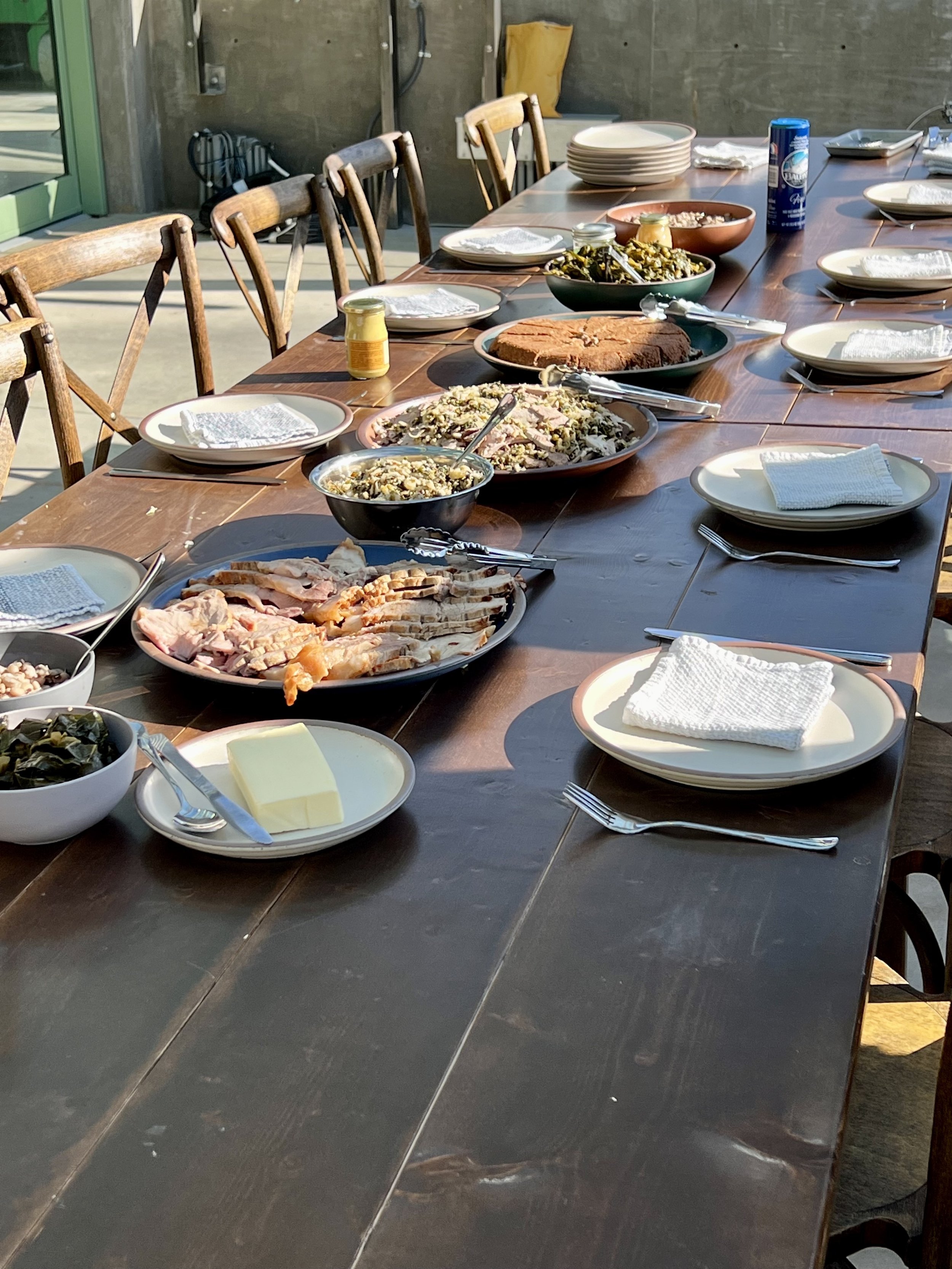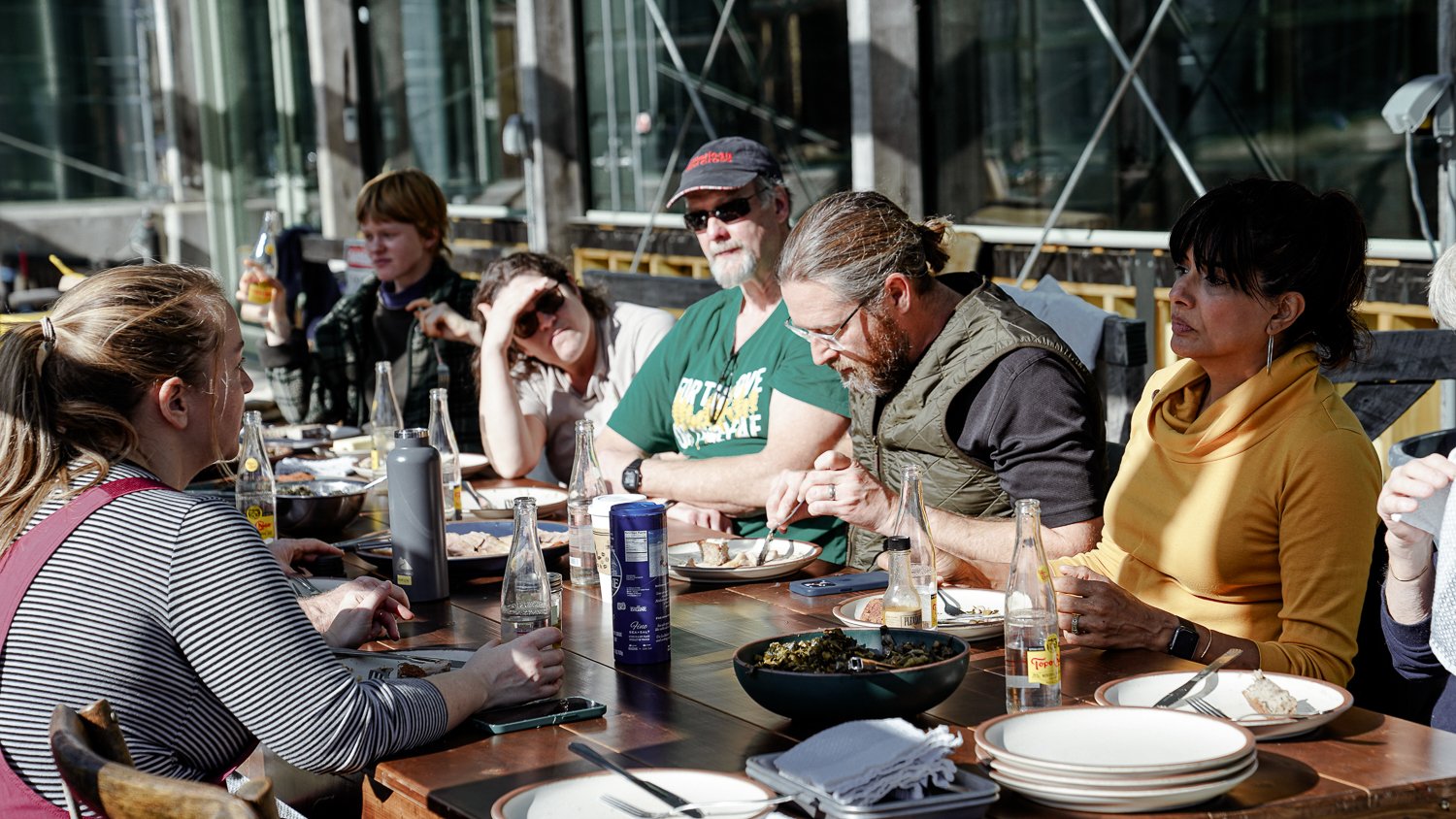From the Kitchen: Kraut, Luck & Money, and a New Year’s Ham
Photos: Jessica Todd-Marrone
One of our chief goals at Burkett Farm is to get people excited about locally grown, sustainable food - and there’s no better way to do that (in our opinion) than inviting them to experience it hands on - growing, preparing, and eating fresh vegetables here at the farm.
So while the majority of what we grow will always go directly into the community to feed or support people experiencing food insecurity, we hold onto a small portion of what we harvest for educational experiences and community meals.
To kick off 2024, we dedicated a morning to learning about and making sauerkraut with the last of our cabbage harvest. Why sauerkraut? Well, we’re no strangers to fermentation here. (Pre-pandemic, we hosted a recurring kimchi workshop with Soo Hee Kwon - a much beloved event that taught visitors to the farm how to make their own Korean-style fermented cabbage.) Fermentation and farming go hand in hand - it’s a process that’s happening constantly and spontaneously in our soil and on our land through microbial activity and the decomposition of plant matter, and is a crucial factor in keeping soil healthy (compost is made through fermentation). In the kitchen, fermentation is a key part of every food culture; it can preserve natural ingredients, amplify nutritional value, and enhance flavor. There are so many versions of fermentation - cheese, wine, bread, and vegetables, to name a few. But vegetables offer one of the easiest entry points: low energy, very safe, and incredibly delicious.
Gathering in the newly commissioned greenhouse, our team of staff, volunteers, and friends of the farm shredded, salted, squeezed, pounded, and packed 68 pounds of cabbage - enough to have a stash of Burkett Farm “house kraut” to last through the year, plus extra for all our participants to make a small jar of their own. (Jump to our guide to making kraut.)
Then we gathered for a New Year’s meal of luck and money; a requisite meal plan for most Southerners during the first week of January.
This dish of stewed collards and black eyed peas is rooted in the historical coalescence of West African and Eastern European traditions in the American South. The collards are said to symbolize money, and signal good financial fortune, while black eyed peas promise luck. It’s typically accompanied by cornbread and some form of pork.
Here’s the rundown on our menu. What we didn’t source from our own fields, came from local farms with sustainable practices in our vicinity.
Collards, grown on our farm, braised and served with their potlikker.
We stewed black eyed peas from Marsh Hen Mill in Edisto, South Carolina.
Our cornbread was made with Bloody Butcher heirloom cornmeal, grown and milled by Red Tail Grains in Mebane, NC. This heirloom variety of dent corn has been grown in the Appalachian Mountains for generations.
For pork, we sourced a fresh ham from Cane Creek Farm through Left Bank Butcher in Saxapahaw - and prepared it in two ways. First - a straightforward corned ham, the classic of eastern North Carolina; second, a stuffed ham, in the style of Southern Maryland. Jamie, our farm manager, grew up in the region where this unique preparation originated, in which a spicy mixture of cabbage, onions, and kale is stuffed into the ham; the meat is wrapped in cheesecloth or a pillow case, and boiled.
A Burkett Guide to Kraut
A Burkett Guide to Kraut
What is sauerkraut:
Sauerkraut is chopped cabbage that has been fermented (metabolically altered) by beneficial lactic acid-producing bacteria, which gives it a pleasantly sour flavor. By packing cabbage in a salt brine, spontaneous fermentation begins within a day or two, and will continue for up to about three weeks. There is strong scientific evidence that sauerkraut provides numerous health benefits, such as antioxidant and anti-carcinogenic effects and anti-inflammatory properties.
There are five key steps to making sauerkraut.
1. CHOP
2. SALT
3. APPLY SOME MUSCLE
4. PACK & WEIGH DOWN
5. WAIT
1. Why chop? By chopping the vegetables, it creates more surface area, which facilitates releasing more liquid to create the required oxygen-free (anaerobic) environment for them.
2. Why salt? Salt pulls water out of veggies, thus creating anaerobic environment. Salt narrows the range of bacteria that can survive and grow, giving salt-tolerant lactic acid bacteria an advantage.To determine how much to salt to use, calculate 1.5 - 2.5% of total cabbage weight - we went with 2 teaspoons per pound of shredded cabbage. It’s best to use sea salt or pickling salt (do not use iodized salt or any salt with additives like anti-caking agents).
Salt keeps the veggies crispy by hardening plant cell compounds called pectins. Salt preserves and extends the lifespan of the product by slowing things down: fermentation, pectin-digesting enzymes that make veggies mushy, and slowing development of surface molds.
3. Why apply some muscle? Bruising the cell walls releases liquid. You can massage, pound, squeeze, or squash!
4. Why pack? It’s crucial to create an environment free of oxygen (anaerobic) for fermentation to occur. Liquid must completely cover the veg. We do this by packing it tightly in jars or crocks, and then weighing down the surface with weights.
5. Why wait? It takes about 3 weeks for the lactic acid-producing bacteria (LAB) to do its thing. There are a few different types of bacteria that create the fermentation process: Leuconostoc mesenteroides, Lactobacillus brevis, Pediococcus pentosaceus, and Lactobacillus plantarum.
In the first week, carbon dioxide bubbles will occur. If you’re using a Mason jar, make sure to open the lid daily to “burp” the jar - allowing those gases to escape. You can use this opportunity to make sure all your cabbage is still below the water line.
Use sensory cues to determine when your sauerkraut is ready - it should smell pleasantly sour, not yeasty or rotten. It should taste tart, salty, and cabbage-y. Once the sauerkraut is fermented to your liking, seal the container and store in the fridge for up to one year.
How to enjoy sauerkraut:
Think of kraut as a pickle that you can use to enhance the flavors of other things, as well as enjoy on its own. Finely chop kraut to act as a relish for a grilled fillet of meat or a hot dog; add kraut to a grain bowl; add some kraut to your tuna salad or potato salad; or add it to a grilled cheese sandwich. You can also use the brine in vinaigrettes, marinades, sauces or even cocktails (kraut dirty martini?).
Resources:
Information:
The Art of Fermentation by Sandor Katz
Supplies:
Fermentation crocks - For fermenting larger volumes of vegetables, fermentation crocks are a worthy investment. They’re heavy-duty, non-reactive vessels that can safely hold your ferments and protect them from major temperature fluctuations and debris. The Ohio stoneware crocks come with lids and weights.
Mason jar fermentation lids - These lids fit into a standard Mason jar lid ring, and save you the trouble of needing to burb your ferments. The gasses and excess brine can escape through the nipple, but oxygen can’t pass inward.
Glass fermentation weights - These weights fit snuggly in a wide-mouth quart-size Mason jar and are super useful in keeping all your fermenting veg below the brine line. There are quite a few producers you can choose from and source easily at a hardware store or via Amazon.


